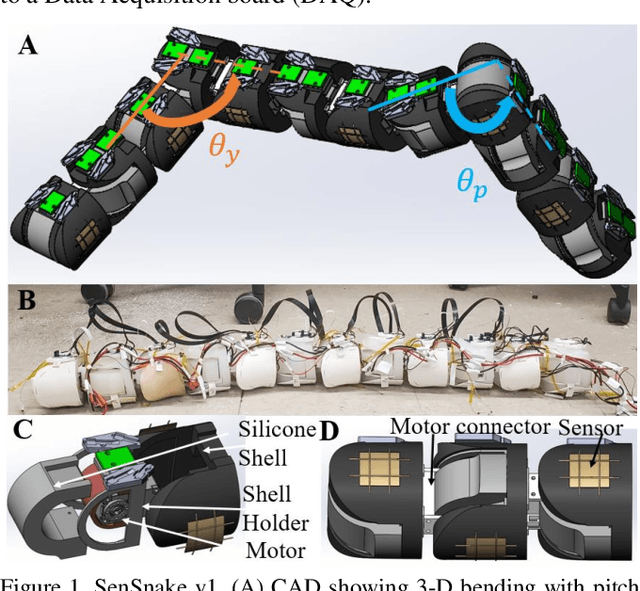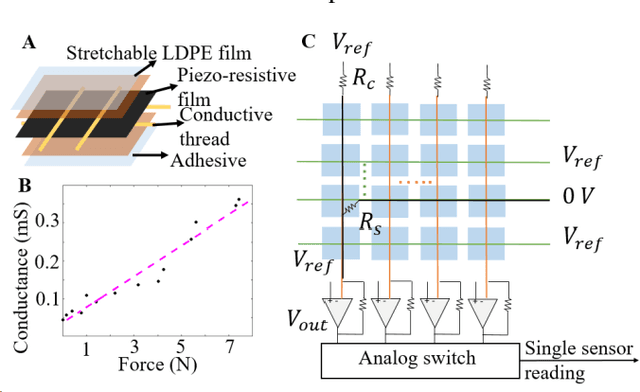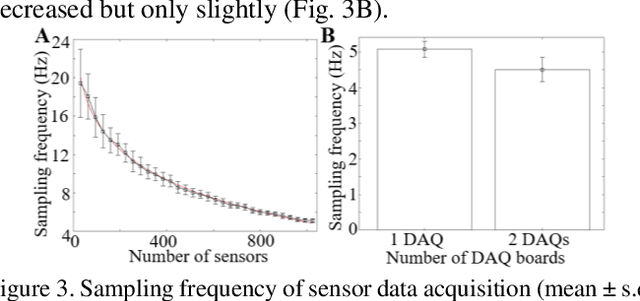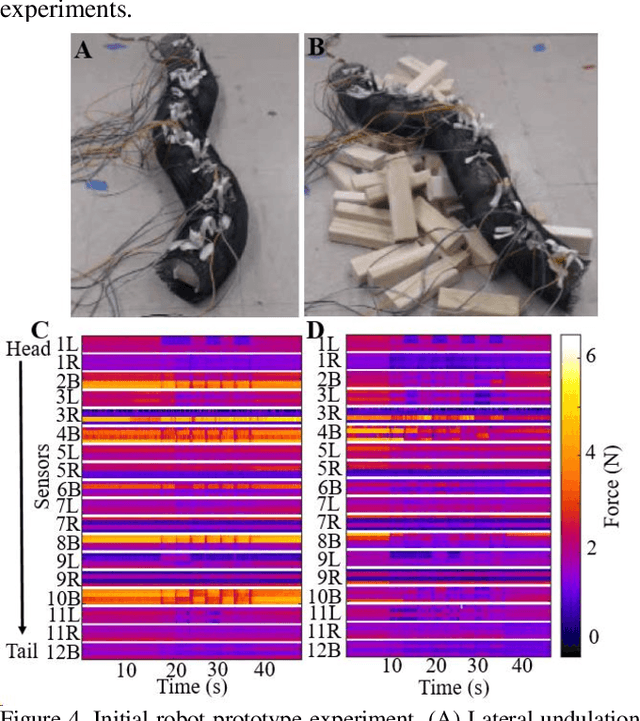Qiyuan Fu
Snake and Snake Robot Locomotion in Complex, 3-D Terrain
Feb 22, 2023Abstract:Snakes can traverse almost all types of environments by bending their elongate bodies in 3-D to interact with the terrain. Similarly, a snake robot is a promising platform to perform critical tasks in various environments. Understanding how 3-D body bending effectively interacts with the terrain for propulsion and stability can not only inform how snakes traverse natural environments, but also allow snake robots to achieve similar performance. How snakes and snake robots move on flat surfaces has been understood well. However, such ideal terrain is rare in natural environments and little was understood about how to generate propulsion and maintain stability in 3-D terrain, except for some studies on arboreal snake locomotion and on robots using geometric planning. To bridge the knowledge gap, we integrated animal experiments and robotic studies in three representative environments: a large smooth step, an uneven arena of blocks of large height variation, and large bumps. We discovered that vertical body bending induces stability challenges but can generate large propulsion. When traversing a large smooth step, a snake robot is challenged by roll instability that increases with the amplitude of vertical bending. The instability can be reduced by body compliance that statistically improves body-terrain contact. Despite this, vertical body bending can potentially allow snakes to push against terrain for propulsion, as demonstrated by corn snakes traversing an uneven arena. A snake robot can generate large propulsion like this if contact is well maintained. Contact feedback control can help accommodate perturbations such as novel terrain geometry or excessive external forces by improving contact. Our findings provide insights into how snakes and snake robots can use vertical body bending for efficient and versatile traversal of the 3-D world stably.
SenSnake: A snake robot with contact force sensing for studying locomotion in complex 3-D terrain
Dec 15, 2021



Abstract:Despite advances in a diversity of environments, snake robots are still far behind snakes in traversing complex 3-D terrain with large obstacles. This is due to a lack of understanding of how to control 3-D body bending to push against terrain features to generate and control propulsion. Biological studies suggested that generalist snakes use contact force sensing to adjust body bending in real time to do so. However, studying this sensory-modulated force control in snakes is challenging, due to a lack of basic knowledge of how their force sensing organs work. Here, we take a robophysics approach to make progress, starting by developing a snake robot capable of 3-D body bending with contact force sensing to enable systematic locomotion experiments and force measurements. Through two development and testing iterations, we created a 12-segment robot with 36 piezo-resistive sheet sensors distributed on all segments with compliant shells with a sampling frequency of 30 Hz. The robot measured contact forces while traversing a large obstacle using vertical bending with high repeatability, achieving the goal of providing a platform for systematic experiments. Finally, we explored model-based calibration considering the viscoelastic behavior of the piezo-resistive sensor, which will for useful for future studies.
 Add to Chrome
Add to Chrome Add to Firefox
Add to Firefox Add to Edge
Add to Edge